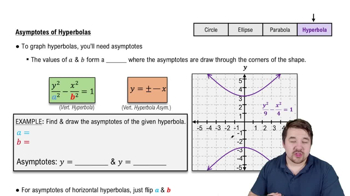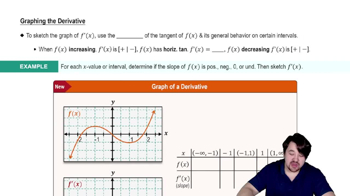Determine whether the following statements are true and give an explanation or counterexample.
c. The graph of a function can have any number of vertical asymptotes but at most two horizontal asymptotes.
 Verified step by step guidance
Verified step by step guidance Verified video answer for a similar problem:
Verified video answer for a similar problem:



 6:47m
6:47mMaster Finding Limits Numerically and Graphically with a bite sized video explanation from Patrick
Start learning